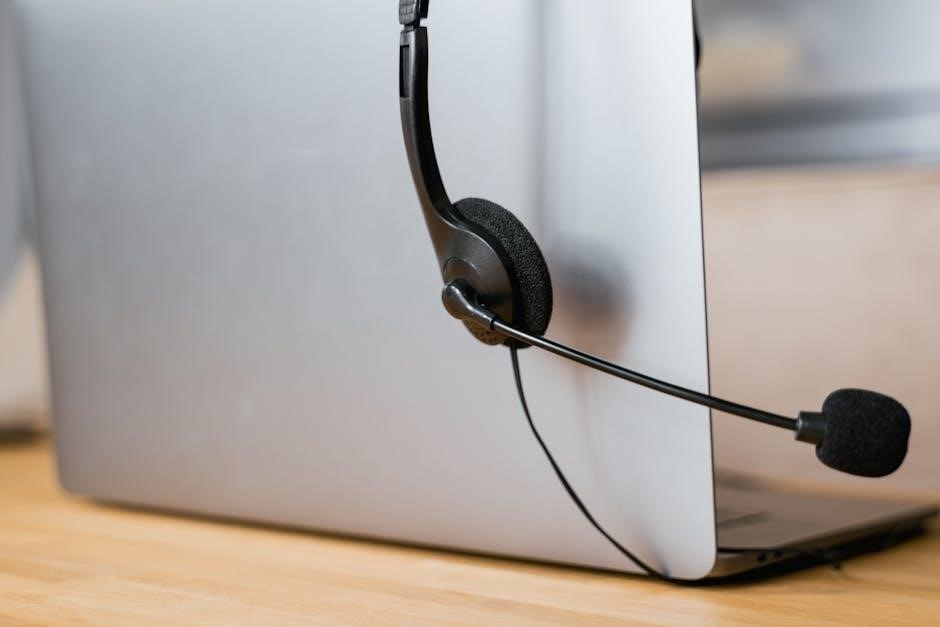JL Audio Wiring Guide: A Comprehensive Overview
A JL Audio wiring diagram offers a visual guide to connect car audio components‚ detailing electrical connections between the head unit‚ amplifier‚ speakers‚ and peripherals․ This guide provides instructions to install and wire a JL Audio system for optimal performance․
Understanding JL Audio Wiring Diagrams
JL Audio wiring diagrams are essential tools for anyone looking to install or upgrade their car audio system․ These diagrams provide a clear visual representation of how to connect various components‚ such as head units‚ amplifiers‚ speakers‚ and subwoofers‚ ensuring proper and safe installation․ Understanding these diagrams is crucial for achieving optimal audio performance and preventing damage to your equipment․
A typical JL Audio wiring diagram illustrates the electrical connections between different components‚ showing the correct polarity (+ and -) and the appropriate gauge of wire to use․ It also includes information on impedance matching and how to wire multiple speakers or subwoofers․ By following these diagrams carefully‚ you can avoid common wiring mistakes and ensure that your audio system functions as intended․
Whether you are a seasoned audio enthusiast or a beginner‚ taking the time to understand JL Audio wiring diagrams will empower you to tackle your car audio projects with confidence․ With the right knowledge and a little patience‚ you can transform your vehicle into a mobile sound system that delivers exceptional audio quality․
Wiring Single Voice Coil (SVC) Subwoofer Drivers
Wiring a single voice coil (SVC) subwoofer driver is a fundamental task in car audio installation․ SVC subwoofers have a single set of terminals‚ making the wiring process relatively straightforward․ The primary goal is to connect the subwoofer to the amplifier in a way that matches the amplifier’s impedance requirements․ Proper wiring ensures optimal power transfer and sound quality․
To wire an SVC subwoofer‚ you’ll need speaker wire‚ wire strippers‚ and possibly crimp connectors or solder․ The first step is to identify the positive (+) and negative (-) terminals on both the subwoofer and the amplifier․ Next‚ cut the speaker wire to the appropriate length‚ strip the ends‚ and connect one end to the positive terminal on the amplifier and the other end to the positive terminal on the subwoofer․ Repeat this process for the negative terminals․
It’s crucial to ensure that the connections are secure and that the polarity is correct․ Reversing the polarity can result in reduced bass response and potential damage to the subwoofer or amplifier․ Once the wiring is complete‚ double-check all connections before powering on the system․ With careful attention to detail‚ wiring an SVC subwoofer can be a simple and rewarding experience‚ enhancing your car’s audio system․
Wiring Dual Voice Coil (DVC) Subwoofer Drivers
Wiring dual voice coil (DVC) subwoofers offers more flexibility in impedance matching compared to single voice coil (SVC) subwoofers․ A DVC subwoofer has two separate voice coils‚ each with its own set of terminals․ This allows for different wiring configurations to achieve the desired impedance for the amplifier․
The two primary wiring options for DVC subwoofers are series and parallel․ In a series configuration‚ the positive terminal of one voice coil is connected to the negative terminal of the other․ The remaining terminals are then connected to the amplifier․ This configuration increases the overall impedance․ In a parallel configuration‚ the positive terminals of both voice coils are connected together‚ and the negative terminals are connected together․ These combined terminals are then connected to the amplifier‚ which decreases the overall impedance․
When wiring DVC subwoofers‚ it’s essential to know the impedance of each voice coil and the desired final impedance․ Wiring diagrams are helpful in visualizing the connections․ Always ensure that the connections are secure and the polarity is correct․ Incorrect wiring can lead to poor performance or damage to the subwoofer or amplifier․ Understanding these wiring options allows you to optimize your car audio system’s performance․
JL Audio Premium Power Connection Systems
JL Audio Premium Power Connection Systems provide all components needed for secure power connections to one or two JL Audio amplifiers․ These systems ensure high integrity and reliable performance for car audio setups․ They include real copper power and ground wire built to True AWG specification․
A key component of these systems is the master fuse block with a fuse‚ which protects the amplifier and electrical system from power surges․ The systems also feature a grounding solution for minimizing noise․ These power connection systems are designed to provide optimal power delivery to the amplifiers‚ ensuring they operate efficiently and deliver the best possible sound quality․
Using high-quality power connections is crucial for car audio systems․ Poor connections can result in voltage drops‚ which can reduce amplifier output and cause distortion․ They can also generate heat‚ which can damage the amplifier and other components․ JL Audio’s Premium Power Connection Systems minimize these risks‚ ensuring a stable and reliable power supply for the audio system․ They are a great choice for anyone looking to improve their car audio system’s performance and reliability․
Wiring JL Audio Amplifiers
When wiring JL Audio amplifiers‚ it’s crucial to follow the wiring diagram specific to your amplifier model․ These diagrams provide precise instructions on connecting power‚ ground‚ remote turn-on‚ and speaker wires․ Ensuring correct connections is vital for optimal performance and to prevent damage to the amplifier․
For power connections‚ use high-quality power and ground wires with appropriate gauge for the amplifier’s power requirements․ Securely connect the power wire to the positive terminal of the battery‚ including an inline fuse close to the battery․ Connect the ground wire to a clean‚ unpainted metal surface on the vehicle’s chassis․
The remote turn-on wire should be connected to the head unit’s remote output‚ which signals the amplifier to turn on when the head unit is powered․ Speaker wires should be connected according to the diagram‚ matching the polarity (+ and -) to the speakers․ Use quality speaker wire for best sound quality․ JL Audio also offers premium power connection systems to create secure power connections․
By following these guidelines and consulting the amplifier’s wiring diagram‚ you can ensure a properly wired JL Audio amplifier for optimal sound performance and reliability․
Wiring JL Audio Subwoofers: 13W7 Example
Wiring a JL Audio 13W7 subwoofer requires careful attention to detail to maximize its performance and ensure proper operation․ Always consult the owner’s manual for specific instructions and safety precautions․ The 13W7 is a high-performance subwoofer‚ so using appropriate wiring and connections is crucial․
Start by determining the desired impedance based on your amplifier’s capabilities․ The 13W7 is available in different voice coil configurations (e․g․‚ single 3 ohm‚ dual 1․5 ohm)‚ impacting how you wire it to achieve the desired impedance load․ Ensure your amplifier can handle the chosen impedance safely․
Use high-quality‚ appropriately gauged speaker wire to connect the subwoofer to the amplifier․ For a single voice coil configuration‚ simply connect the positive and negative terminals of the subwoofer to the corresponding terminals on the amplifier․ For dual voice coil configurations‚ you’ll need to wire the voice coils in series or parallel to achieve the desired impedance before connecting to the amplifier․
Secure all connections and double-check the wiring to avoid any shorts or misconnections․ Proper wiring ensures the 13W7 delivers its full potential‚ providing powerful and accurate bass response․

Wiring Multiple Subwoofers and Impedance
When wiring multiple subwoofers‚ understanding impedance is crucial to match the amplifier’s requirements․ Wiring subwoofers in series increases the overall impedance‚ while wiring them in parallel decreases it․ To determine the final impedance‚ consider the voice coil configuration (single or dual) and the wiring method․
For example‚ two single 4-ohm subwoofers wired in parallel result in a 2-ohm load․ Conversely‚ wiring them in series yields an 8-ohm load․ Dual voice coil (DVC) subwoofers add complexity․ Two DVC 4-ohm subwoofers can be wired to present a 1-ohm‚ 4-ohm‚ or 16-ohm load‚ depending on the configuration․
It’s generally recommended to wire subwoofers in parallel for car audio applications‚ as it typically provides a lower impedance that many amplifiers are designed to handle efficiently․ However‚ ensure your amplifier is stable at the resulting impedance․
Use wiring diagrams to visualize the connections and calculate the final impedance accurately․ Always double-check the wiring before powering on the system to prevent damage to the amplifier or subwoofers․ Proper impedance matching ensures optimal performance and protects your equipment․

JL Audio FiX-LSA-4 Load Sensing Adapter
The JL Audio FiX-LSA-4 Load Sensing Adapter plays a vital role in integrating aftermarket audio systems with factory setups‚ particularly in modern vehicles with advanced electronics․ This adapter is designed to interface between the vehicle’s speaker wires and a processor like the JL Audio FiX 86‚ ensuring a clean and conditioned audio signal․
The primary function of the FiX-LSA-4 is to address load-related issues that can arise when connecting aftermarket amplifiers to factory head units․ Modern car audio systems often incorporate features that monitor speaker impedance․ When an aftermarket amplifier is connected‚ the factory system may detect an incorrect impedance‚ leading to error messages or reduced audio output․
The FiX-LSA-4 effectively simulates the original speaker load‚ preventing these issues․ It connects to the vehicle’s speaker wires and provides a stable load for the factory system‚ allowing the FiX 86 to receive a clean‚ unaltered signal․ This is essential for achieving optimal sound quality and avoiding compatibility problems․
By using the FiX-LSA-4‚ installers can seamlessly integrate high-performance aftermarket audio components without compromising the functionality of the vehicle’s factory audio system․
Essential Wiring Accessories: Cables and Kits
Selecting the correct wiring accessories is crucial for achieving optimal performance and reliability in any car audio system․ JL Audio offers a range of high-quality cables and kits designed to ensure secure and efficient connections between system components․ These accessories are engineered to meet the specific demands of car audio installations‚ providing superior signal transfer and power delivery․
Power and ground cables are fundamental for supplying amplifiers with the necessary current․ JL Audio’s premium power connection systems feature real copper wire built to True AWG specifications‚ ensuring maximum conductivity and minimal power loss․ These kits often include a master fuse block with a fuse and a well-engineered grounding solution․
Speaker wire is another essential component‚ carrying the audio signal from the amplifier to the speakers․ High-quality speaker wire minimizes signal degradation and ensures accurate sound reproduction․ JL Audio offers various gauges and configurations to suit different power levels and speaker types․

RCA cables are used to transmit audio signals between the head unit and the amplifier․ Shielded RCA cables reduce interference and noise‚ resulting in a cleaner audio signal․ Interconnect cables with twisted-pair construction further enhance noise rejection․

By investing in quality wiring accessories‚ you can ensure that your JL Audio system performs at its best‚ delivering exceptional sound quality and long-lasting reliability․
Troubleshooting and Support
Even with careful planning and execution‚ wiring issues can sometimes arise during or after the installation of a car audio system․ Troubleshooting common problems is essential to ensure optimal performance and prevent damage to your equipment․ One frequent issue is a lack of sound‚ which can be caused by loose connections‚ incorrect wiring‚ or a blown fuse․
Another common problem is distortion or noise in the audio signal․ This can be due to poor grounding‚ interference from other electrical components‚ or damaged cables․ Checking the ground connections and ensuring that all cables are properly shielded can help resolve these issues․
If you encounter persistent problems‚ consulting the JL Audio technical support team is highly recommended․ Their experts can provide guidance and assistance in diagnosing and resolving complex wiring issues․ You can reach them through their website or by phone during business hours․
Additionally‚ online forums and communities dedicated to car audio can be valuable resources for troubleshooting and finding solutions to common wiring problems․ Sharing your experiences and seeking advice from other enthusiasts can often lead to quick and effective resolutions․
By utilizing available resources and following proper troubleshooting techniques‚ you can overcome wiring challenges and enjoy the full potential of your JL Audio system․



